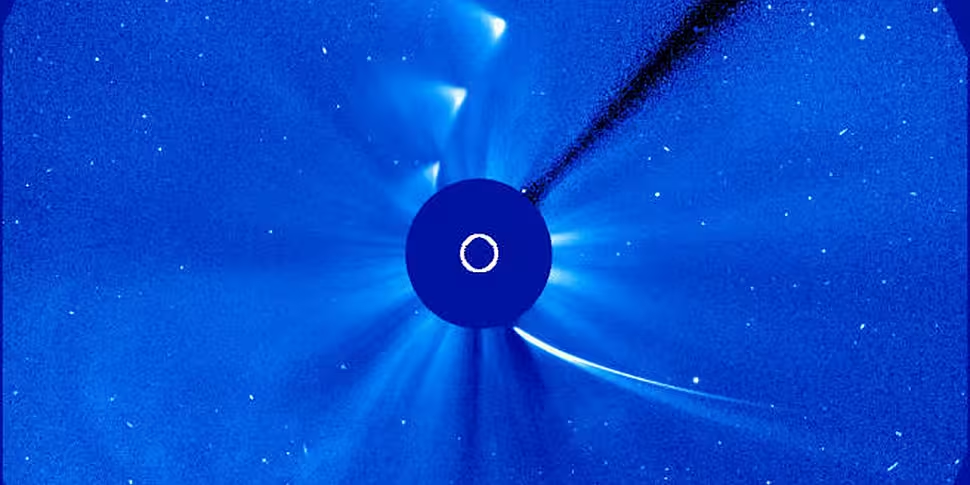Based on initial reports on Thursday night and early Friday, it seemed as if the Comet ISON hadn't survived its close encounter with the Sun, or at least had emerged in a significantly smaller form. However, within hours NASA and other groups had announced that ISON might have made it after all, despite initially alluding observation. Now, the stance has changed once again - and perhaps definitively this time
As NASA explained on Friday, "a streak of bright material streaming away from the sun appeared in the European Space Agency and NASA's Solar and Heliospheric Observatory later in the evening. The question remains whether it is merely debris from the comet, or if some portion of the comet's nucleus survived, but late-night analysis from scientists with NASA's Comet ISON Observing Campaign suggest that there is at least a small nucleus intact."
The agency also released footage showing the comet emerging from perihelion (closest approach to the sun), 'shining' significantly brighter than the first released images had suggested.
Unfortunately, it seems as if ISON has continued to fade as it continues on its orbit: a trajectory that was due to bring it close to Earth later this month. The images following the video above show a rapid decline in brightness. As quoted in the New York Times, NASA Godard's C. Alex Young states, "I think for the most part it’s dead. The folks are finally pretty confident that’s the case."
Dr. Tony Phillips of Space Weather concludes, "As of Dec. 2nd, the cloud of debris is no brighter than a star of approximately 8th magnitude. Experienced astrophotographers might be able to capture the comet's fading "ghost" in the pre-dawn sky of early December, but a naked-eye spectacle is out of the question." National Geographic explains there's little hope that ISON will be visible to the naked eye this month, but the remains might still be visible for astronomers, photographers or even enthusiasts equipped with binoculars.
While we might have been denied one of the best opportunities to see a comet burning brightly in the night sky, the ISON saga will still provide scientists with extremely valuable data about the composition and behaviour of the now 'ex' comet.
Image Credit: ESA/NASA/SOHO/SDO/GSFC









